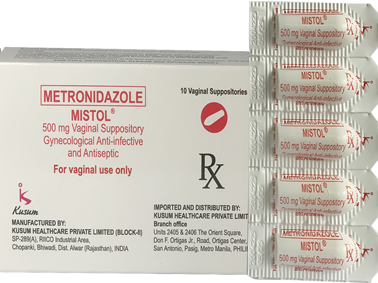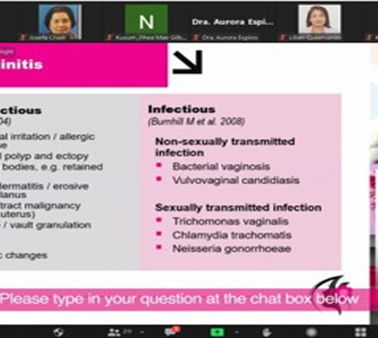Recognizing Seizure Disorder
Seizure and seizure disorder are not the same thing. A seizure is a single occurrence of an abnormal electrical activity in the brain, causing symptoms such as convulsions, thought disturbances, and loss of consciousness. This might either be unprovoked, which is caused by natural causes like genetics and metabolic imbalance, or provoked, which is caused by injury or stroke. To be diagnosed with seizure disorder, one must have had at least 2 unprovoked seizures.1,2
Seizure symptoms may also differ based on the type. Partial or focal seizures starts at one side of the brain, while generalized seizures begin at both sides simultaneously. In simple partial seizure, symptoms may include involuntary twitching, vision changes, dizziness, and sensory changes, while complex partial seizures cause similar symptoms but may also lead to loss of consciousness.1-3
The types of generalized seizures each have their own set of symptoms. Absence seizures are characterized by staring into space or by subtle movements, which may occur in clusters and cause brief losses of consciousness. Tonic-clonic seizures are the most dramatic – it may last for a couple of minutes, causing abrupt loss of consciousness, body stiffening and shaking, and sometimes loss of bladder control or tongue biting.2,3
Other types of seizure can either be partial or generalized, such as atonic (sudden drop of muscle tone), clonic (rhythmic jerking of muscles), tonic (stiffening of muscles), and myoclonic (sudden, lightning-like jerking movements).3
If it is your first time to experience seizure, medical advice is needed. For those whose seizure lasts more than 5 minutes, whose breathing or consciousness does not return after the seizure stops, or whose seizure is immediately followed by another seizure require immediate medical response. Immediate medical help should also be given to those who experience seizure while having a fever, experiencing heat exhaustion, or those who are pregnant, have diabetes, or get injured during a seizure.4
References:
- Davis CP, Shiel WC. Seizure vs. Seizure Disorders: What’s the Difference? MedicineNet. https://www.medicinenet.com/seizure_vs_seizure_disorders_whats_the_difference/article.htm#what_are_the_types_and_symptoms_of_seizures. Updated April 2017. Accessed 2020.
- Madell R. Seizure vs. Seizure Disorders. https://www.healthline.com/health/seizures-vs-seizure-disorders#what-is-a-seizure-disorder. Published 2016. Accessed 2020.
- Mayo Clinic Staff. Seizures. Mayo Clinic. https://www.mayoclinic.org/diseases-conditions/seizure/symptoms-causes/syc-20365711. Published June 2019. Accessed 2020.
- Adamolekun B. Seizure disorder. MSD Manual Consumer version. https://www.msdmanuals.com/home/brain,-spinal-cord,-and-nerve-disorders/seizure-disorders/seizure-disorders. Updated December 2018. Accessed 2020.
Dealing with Seizure Disorder.
Seizure disorder, when left untreated, can become limiting. However, proper treatment based on its underlying cause can help you live a normal life. By identifying the cause and triggers, you may be able to prevent seizures from happening. Certain medications may also be prescribed to help alter or reduce excess electrical activity in the brain that causes seizures. Your doctor will consider your condition, frequency of seizures, and other factors that affect your condition in choosing what medication/s would best work for you. Depending on the cause, dietary therapy might also be suggested.1
In some cases when medication is not sufficient, other treatments such as surgery might be proposed. The goal of surgery is to remove the area of the brain where seizure begins, and it works best for those whose seizures originate in the same place. Other treatments include vagus nerve stimulation, responsive neurostimulation, and deep brain stimulation – all of which involves making use of an implant to produce impulses to counter the excessive electric impulses in the brain, thus preventing seizures from happening.1-2
Until your seizures are controlled, you must avoid activities that might be life-threatening, such as swimming, bathing in tubs, driving, climbing, and operating power tools, until six months after you are seizure free.1
To help in seizure control, you must also remember to take medication correctly – at the proper dose and at the proper time. If you feel like you need your doses adjusted, discuss it with your doctor and do not do it on your own. Get adequate sleep as sleep deprivation may trigger seizures. Wear a medical alert bracelet to help emergency personnel know how to treat you if needed. Stay active through exercise and make healthy life choices such as managing stress, limiting alcoholic beverages, and avoiding smoking. Taking showers instead of bathing in tubs, avoiding swimming alone, modifying your furnishings such as padding sharp corners, and displaying seizure first aid tips can also help you avoid injury during a seizure.2
References:
- Davis CP, Shiel WC. Seizure vs. Seizure Disorders: What’s the Difference? MedicineNet. https://www.medicinenet.com/seizure_vs_seizure_disorders_whats_the_difference/article.htm#what_are_the_types_and_symptoms_of_seizures. Updated April 2017. Accessed 2020.
- Mayo Clinic Staff. Seizures. Mayo Clinic. https://www.mayoclinic.org/diseases-conditions/seizure/symptoms-causes/syc-20365711. Published June 2019. Accessed 2020.
A Better Understanding of Seizure Disorder
Epilepsy is often misunderstood with different facts and myths, some even centuries old. Here are some of the common myths and facts about seizure disorders.
Myth: You lose consciousness and convulse (shake and jerk) when you get a seizure.
Fact: Not all seizures cause unconsciousness or convulsions. There are different types of seizures, each having their own set of symptoms.1,2
Myth: If you have had a seizure, you have epilepsy.
Fact: Seizure is different from seizure disorder or epilepsy. To be diagnosed with seizure disorder, must have had at least 2 unprovoked seizures.1,3
Myth: Flashing lights can trigger a seizure in those with epilepsy.
Fact: Triggers differ from person to person, such as stress, lack of sleep, and alcohol. However, in those that have epilepsy, it is noted that only about 3% have photosensitive epilepsy. It is more common in children (up to 5%) and less common after 20 years of age.2
Myth: Epilepsy is very rare.
Fact: Around 50 million people worldwide have epilepsy, making it one of the most common neurological disorders globally. Nearly 80% of people with epilepsy come from low- to middle-income countries.4
Myth: When someone gets a seizure, you should hold them down and put your finger or a spoon in their mouth to keep them from choking from their tongue.
Fact: During a convulsive seizure, you should not hold the person down nor put anything in their mouth. This can actually hurt them instead. When someone goes through a convulsive seizure, roll them to their side (recovery position), keep the person in a safe distance from any nearby objects, and stay with them until they recover. Just let the seizure run its course. If there seems to be distress, the seizure persists longer than 5 minutes, or is immediately followed by another seizure, call for immediate medical help.2,3,5
Myth: Epilepsy is a lifetime condition and cannot be controlled.
Facts: It is estimated that up to 70% of people with epilepsy can live seizure-free if properly diagnosed and treated.3,4
References:
- Davis CP, Shiel WC. Seizure vs. Seizure Disorders: What’s the Difference? MedicineNet. https://www.medicinenet.com/seizure_vs_seizure_disorders_whats_the_difference/article.htm#what_are_the_types_and_symptoms_of_seizures. Updated April 2017. Accessed 2020.
- Epilepsy myths. Epilepsy Society. https://www.epilepsysociety.org.uk/epilepsy-myths#.XkEBP2gzbIU. Accessed 2020.
- 13 Common Epilepsy Myths, Debunked. Cleveland Clinic: Health essentials. https://health.clevelandclinic.org/13-common-epilepsy-myths-debunked/. Published June 2019. Accessed 2020.
- World Health Organization. https://www.who.int/news-room/fact-sheets/detail/epilepsy. Published June 2019. Accessed 2020.
- Adamolekun B. Seizure disorder. MSD Manual Consumer version. https://www.msdmanuals.com/home/brain,-spinal-cord,-and-nerve-disorders/seizure-disorders/seizure-disorders. Updated December 2018. Accessed 2020.




